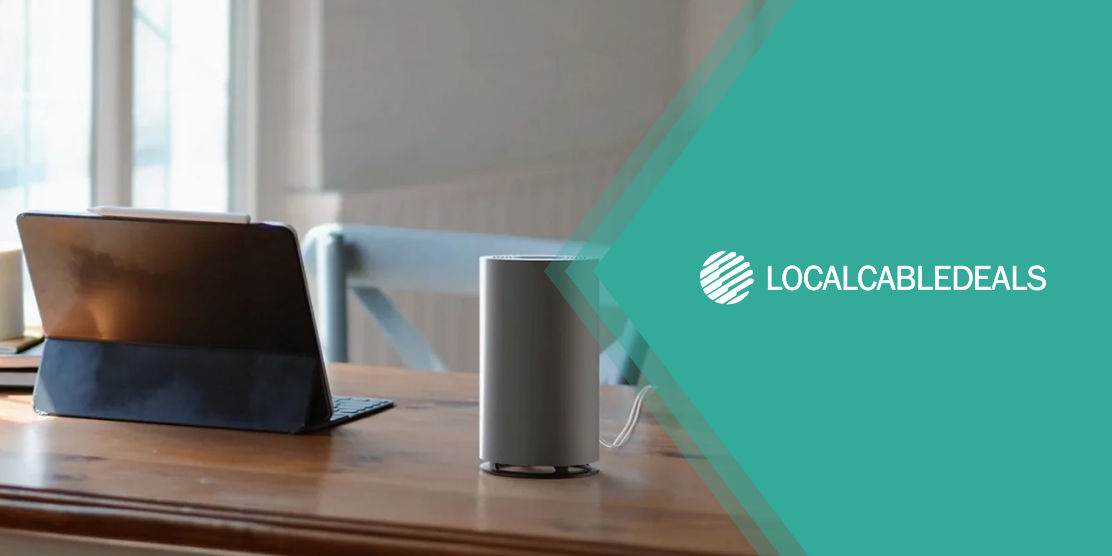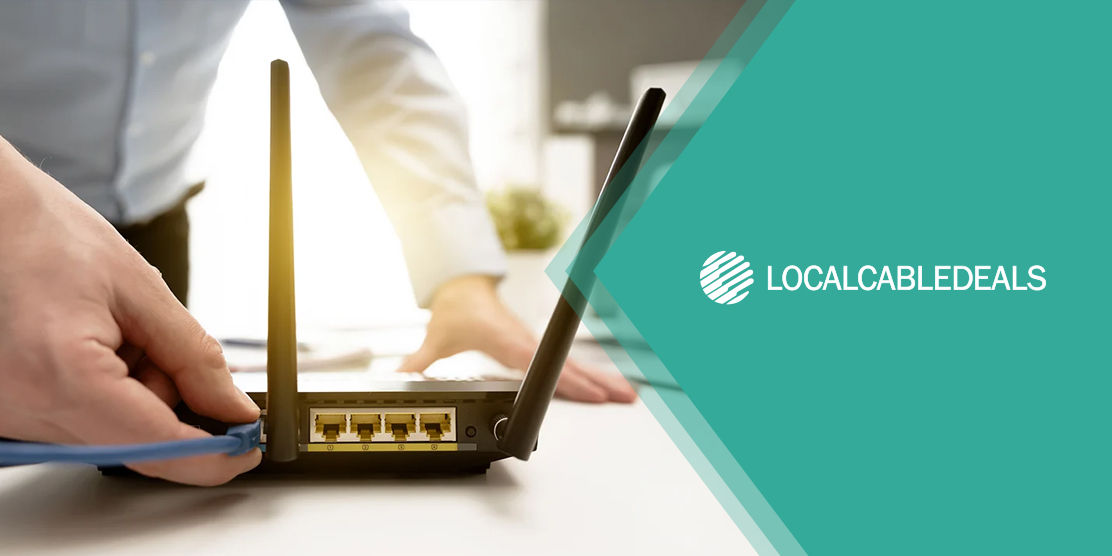WiFi is the umbilical cord of the modern world - Kammpan Sharma
Free WiFi – two powerful words that can turn heads, flip frowns upside down, and maybe even contribute to world peace. These words are frequently put on show at cafes, malls, restaurants, airports, hotels, etc. to lure in customers – an effective selling point indeed.
Almost 50% of Americans regularly use public WiFi while they’re out and about. Free internet or paid mobile data? Nobody prefers the latter, obviously. Public WiFi hotspots are pretty handy for freelancing/remote work, carrying out financial transactions on the go, or simply scrolling through social media.
While free public WiFi is undoubtedly convenient, is it safe? Are the risks worth switching from a private network you have to pay for? What can we do to protect ourselves? Let’s find out…
What are the Potential Risks of Using Public WiFi?
Public WiFi hotspots often lack proper encryption, which makes them insecure. You never know who you’re sharing the network with; a cybercriminal or hacker might be hiding behind the most unsuspecting face.
The internet is never void of cyber threats; however, private networks are equipped with sufficient security features to keep them at bay. On a public network, you’re more exposed and vulnerable to:
1. WiFi Snooping
How would you feel about a stranger eavesdropping on a private conversation you’re having with your best friend? Even worse if they intend to use the sensitive information against you?
That’s what WiFi snooping is like – alleged bad actors on a public network spy on data shared between the user and router/web applications. Their purpose is to get hold of any confidential information that can be used to blackmail people for financial gain.
2. Infectious Malware
Unprotected public WiFi hotspots make it much easier for cyber crooks to infect connected devices with harmful software. The injected malware may surface in the form of a standard-looking ad on a supposedly safe website.
You might be tricked into installing a dangerous file, program, or plugin mimicking an actual app that is considered harmless. Hackers detect the vulnerabilities in your device to exploit personal data by sneaking in viruses and spyware.
3. Identity Theft
Once a hacker establishes a connection to your device on an open WiFi network, they might be able to collect enough information to commit identity theft. Your location data, bank account details, and basic personal info, like where you work and who you’re in a relationship with, isn’t too hard to discover.
The more a hacker learns about you, the graver the potential consequences. You may fall victim to targeted cyberattacks, or an intruder could use your identity to commit other offenses; as a result, you’d be held accountable for someone else’s crimes.
4. Phishing Attacks
When cybercriminals have gathered sufficient information about a user, they use it to deceive them via phishing attacks. Phishing occurs in several forms; the most common kind is fabricated emails that are aimed at fooling the target into sending money or sharing confidential information.
Phishing emails are designed to look like they were sent by a legitimate organization, such as your bank or property dealer. However, if you look closely, you’re bound to notice minor spelling errors or modifications to contact details.
5. Mock Hotspots
Even though connecting to any public hotspot poses risks, password-protected WiFi offered by reputable establishments is comparatively safer. Therefore, make sure you have the right network before you connect to it.
Cybercriminals in the vicinity may create fake hotspots using the establishment’s name to trap people in a malicious network. When you check available WiFi networks in the area and notice hotspots with identical or similar names, beware.
6. Password Leaks
We all have numerous passwords saved on our phone apps and web browsers because nowadays, you need a digital account for everything. Connecting to an unsecured public WiFi hotspot inflicts the possibility of these saved passwords getting leaked or cracked.
7. Session Hijacking
Session hijacking is a cyberattack that is similar to hijacking a plane. Just like an airplane hijacker taking control of the plane and endangering passengers, a session hijacker takes over your internet session to jeopardize your privacy - the hijacker acts on your behalf, while the app or website thinks it’s you.
8. Account Invasion
After a hacker successfully cracks your passwords, they can fraudulently take possession of multiple online accounts. They may change the passwords while pretending to be you and thereby lock you out of your personal accounts.
How to Stay Safe on a Public WiFi Network?
Do you see it now? The internet can be a scary place without adequate security measures. And so, let’s talk about how you can protect yourself against the hazards on a public WiFi network.
1. Ensure You Have the Correct Network
Never trust public hotspots without verification. Let’s say you’re at a mall, seated near a coffee shop; if your phone detects an open WiFi network with the shop’s name, it’s best to confirm its authenticity by reaching out to an employee.
2. Stick to Safe Websites
Websites with “https” at the beginning of their URL are equipped with an SSL certificate; the data passing between these sites and users is encrypted. The encrypted data is unreadable and difficult to decode, so your activity on these secured sites cannot be viewed by anyone on the network.
3. Connect to a VPN
Whenever you need to use a public WiFi hotspot, the simplest and most effective way to hide your online activity is by activating a reliable VPN service. When you connect to public WiFi via VPN, your IP address is concealed and your data is encrypted.
4. Turn off Auto-Connect
Mobile devices can automatically connect to an open WiFi network or a public hotspot that you previously used. This is totally fine for trusted networks but can be problematic otherwise. Turn off the auto-connect feature and remember to select the “forget network” option on your device after you’re done using the hotspot.
5. Don’t Access or Share Private Info
Refrain from logging into your bank and other private accounts while you’re using public WiFi. In case you’re required to share personal information on a website, you can either fake it (give yourself an alternate persona) or put it off until you’re connected to a safe and private network.
6. Install Firewall and Antivirus Software
Devices that are equipped with an active firewall and antivirus software can effectively evade cyberattacks. The mentioned tools efficiently detect malicious content and links, so they are blocked before gaining unauthorized access to your database.
7. Use Complex Passwords
Unique and complex passwords are harder to crack. Public WiFi or not, setting strong passwords is advised to fortify your online accounts. Moreover, choose a different password for every account, so that if one of them is compromised, the remaining are safe.
8. Enable Multi-Factor Authentication
By enabling multi-factor authentication, you add an extra layer of security to your private accounts; to gain access, you’ll have to prove your identity through two or more steps. For example, an intruder won’t be able to break into an account despite having the correct password because the entry of a code (sent to your phone) is required to complete verification.
9. Connect to Your ISP’s Hotspots
Why connect to some shady public WiFi when you can rely on secured hotspots from your internet service provider (ISP)? Several leading ISPs in the United States offer free WiFi hotspots to customers nationwide – can you think of a better way to stay connected on the go?
So, Is Public Wi-Fi Safe?
Certainly not, if it’s open (doesn’t require a password) and the source is suspicious or unknown. On the contrary, if the provider is verified, the network is password-protected, and you know how to implement safe browsing practices – you may consider it safe since the mentioned risks are minimized.
FAQs
Is it safe to use public WiFi with VPN?
Yes, connecting to a VPN to use public WiFi is the most effective way to prevent data breaches and cyberattacks. The VPN hides your IP address and encrypts your data, so it cannot be viewed by other users on the network.
What activities should be avoided when using public WiFi?
When connected to a public WiFi hotspot, avoid visiting websites or using apps that store your passwords and financial information (such as credit card numbers). It’s also best to refrain from online purchasing, accessing your bank app, and logging into social media accounts.
Can public WiFi providers see what I do online?
The owner of the public WiFi hotspot has access to the internet router’s admin panel, so yes, they can see everything you do online.
Is password-protected public WiFi safer than open WiFi?
While open WiFi may seem convenient, connecting to it involves a high level of risk; this is because it may come from a suspicious source, and the presence of bad actors on the network is more likely. On the other hand, password-protected WiFi hotspots offer a private network hosted by a reliable establishment; hence, they are much safer.






